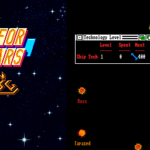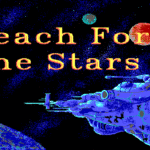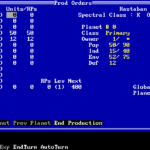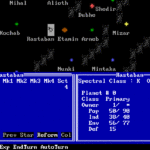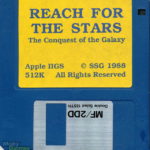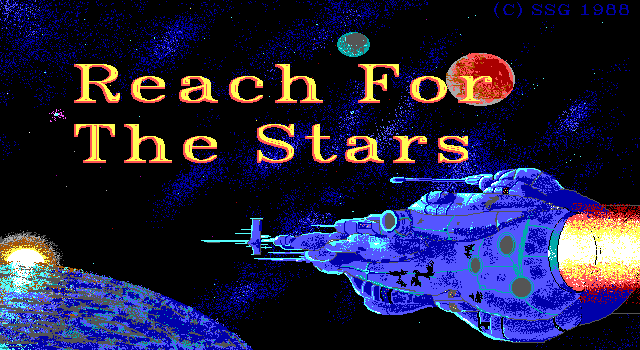
“Reach for the Stars: The Conquest of the Galaxy” is a turn-based, strategy / war simulation game. It is regarded as one of the first and best 4X (eXplore, eXpand, eXploit, eXterminate) games. The game was created and distributed by SSG Strategic Studies Group Pty Ltd.
The game’s universe is quite large, and in every star system there can be several planets. So, late in the game, you have to command vast space fleets while keeping your rapidly growing population from consuming all production. You can choose to play the game on the basic level (default) or the advanced level, which adds complexity and expands your options for research (which is quite limited), random events, and more. You start by commanding a home star in the galaxy, and you then extend to forming an interstellar empire, by colonizing far-off worlds, building powerful starships, and researching new technologies.
“Reach for the Stars” was strongly influenced by the board game “Stellar Conquest” published by Avalon Hill. But not wishing to burden themselves with having negotiate with a third party SSG decided to go their own way with the design rather than make a version of “Stellar Conquest”.
“Reach for the Stars” graphics are minimal, yet the tactical and strategic elements provide countless rich combinations for colony development and interstellar warfare. The software’s AI also offers a challenging opponent in single-player games. It is not uncommon for a “Reach for the Stars” game to take over twelve hours to complete in single-player mode and 24 hours with multiple players.
In Versions 1 to 3 of the game, the player starts off with one planet that has Level 1 technology and a middle level environment. Three types of ships are available:
1. Scouts – these are very inexpensive, and are incapable of fighting or carrying colonists. These can be used as a low-cost, low-risk means to learn the composition of unknown star systems, or the locations and makeup of enemy fleets.
2. Transports – these are incapable of fighting, but can carry colonists.
3. Warships – these are incapable of carrying colonists, but can fight.
When you start the game, you have limited funds, and you have to decide where to invest the funds (technology upgrades, ships,or environmental upgrades). Upgrading a world’s planetary environment, for example, means that its population grows more quickly, thus improving production. This is a mixed blessing though, because if the population grows beyond the maximum allowed for that planet, the costs to feed the population skyrocket. Building a lot of ships early can win a player the game, if the player finds his enemies’ home planets before they manage to upgrade their military technology. On the other hand, this can lead to a loss if the player’s opponents upgrade first and attack with superior ships. Each turn is divided into two sections – a development phase, and a movement phase. In the development phase, you work on planetary production, by deciding what each planet will produce during that turn. In the movement phase, you have the option of sending ships to other star systems, in order to explore, colonize, or conquer.
Version Information
“Reach for the Stars” was written by Roger Keating and Ian Trout of SSG Australia, and was published in 1983 for the Commodore 64, and then for the Apple II in 1985. Version 3 of the game added a DOS port, though it did not share all of the features of the other platforms. The game was eventually ported to pre-Mac OS X versions of the Macintosh operating system, such as System 6. It was also ported to the Amiga and Apple IIGS, from the Mac OS version.
Game Meta
Other Names
Additional Creators
Conversions
Value Chain
Screenshots
- Title screen
- Title screen
- Title screen
- Title screen
- Screenshot
- Screenshot
- Screenshot
Box Art
- Reach for the Stars (DOS)
- Cover – Amiga and C64 v.3
- Back cover – Amiga and C64 v.3
- Designer’s notes C64 v.3
- Inside cover – C64
- Art work – C64
Media
- Disk and game manual
- Disk
- Roger Keating – “This is about 1982 and shows the complete printout, in 6502 assembly code, of ‘Reach for the Stars’.
Manuals & Walkthroughs
Video

